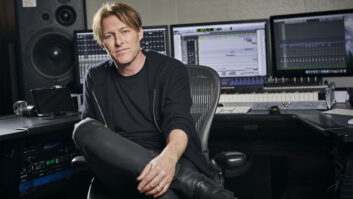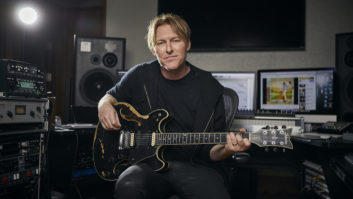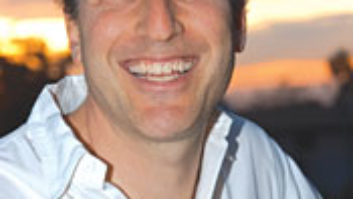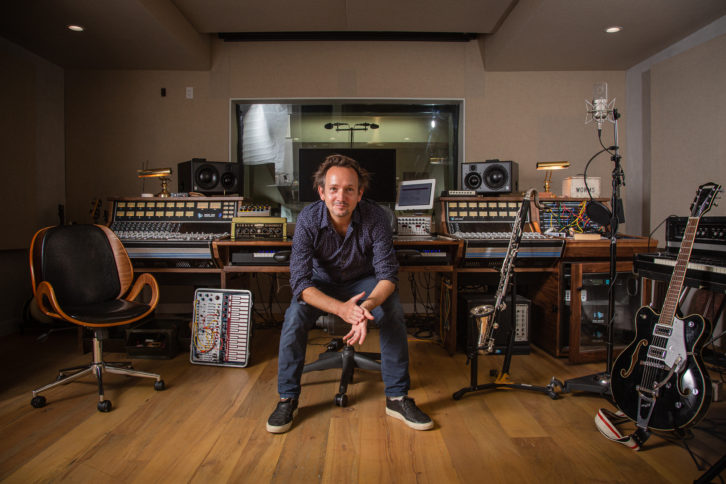
Will Bates went through inadvertent, self-taught sensitivity training while scoring Hulu’s docuseries Hillary and the Netflix miniseries Unbelievable. Both works, real life and based on real life, respectively, deal with people and matters that require a subtle touch in all aspects of the storytelling, especially the music.
While Bates has plenty of feature films on his resume, since moving his longstanding music and post-production company, Fall On Your Sword, from New York to Los Angeles, he’s become adept at handling documentaries, most recently The Inventor: Out for Blood in Silicon Valley and Crazy, Not Insane. The British born and bred Bates has become even more of an expert at handling series with The Magicians, Sweetbitter and In the Dark, to name a few.
“Whether it’s a documentary or a narrative, I tend to start every process in a similar way,” says Bates from the North Hollywood headquarters of Fall On Your Sword. “I’m very inspired by sounds. Sounds are what give birth to my melodies. Even if a score isn’t piano-led, I’ll have moments at the piano to come up with a melody or chord sequence that is intrinsically connected to a character. Then I’ll depart from that and discover melodies and sounds based on what I’ve come up with in that initial process.”
One of the attributes of documentaries is the amount of music, which is typically a lot more more than for a scripted features or series. In the case of Hillary, about Hillary Clinton, a character that, as the four-episode docuseries says is “admired and vilified,” director Nanette Burstein was careful about how the story was presented. Much of the subject’s political career has happened in the public eye, and Burstein wanted to be mindful to not intentionally lead viewers in a particular direction.
The narrative moves along two interweaving timelines, one from Clinton’s past and one from her present. In both instances, Bates kept the music constant and almost inaudible, percolating under the story. When the story becomes too dark, such as losing an election, the music works in the opposite way, bringing some lightness to the tone. During the high points of the story, the tone remains understated, not falsely amplifying an already positive mood.
“[Burstein] wanted to connect the two timelines, subconsciously leading you from one to the other,” says Bates, who was brought in after about 75 percent of the picture was locked. “I found a melody for the archival sequences in the first episode. [Clinton’s] idealism, childhood, high school, everything she did in college and graduating, there was a lightness to it. To justify the media’s response to her throughout the years, I found myself taking a sledgehammer to those melodies, tearing them apart to their simplest forms and using atmospheric beds for the more current timeline.
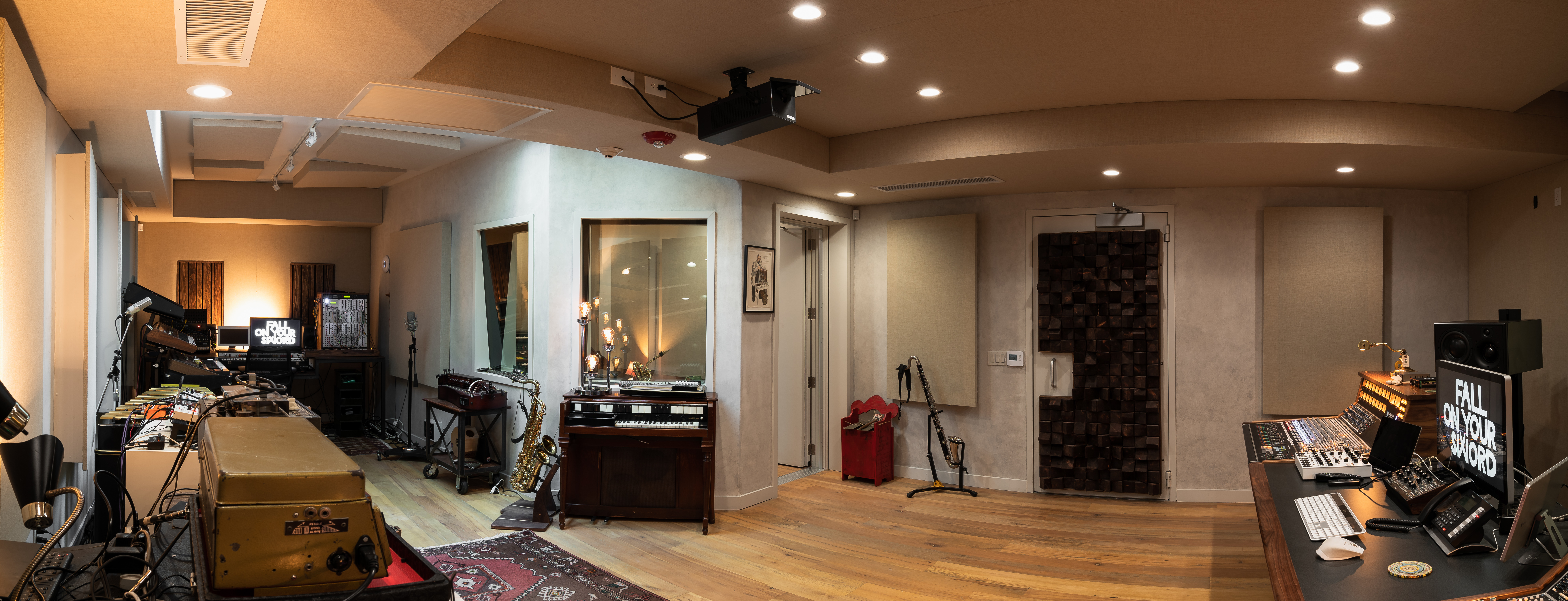
“I used a granulizer, Make Noise Co.’s Morphagene, which is a modular synth,” he explains. “I fed a bunch of melodies into it that we had already decided on. I sliced everything up and started making tonal pads out of them using the Freeze function on Mutable Instruments Clouds. I use those as a bed for references, melody springboards for the more contemporary stuff. If you heard the two pieces of music side by side, they’re born from the same DNA, but not very identifiable melodically. It’s a way for me to reference something that’s happened before and move toward something new.”
In the earlier timeline, Bates tapped his background with the saxophone and incorporated clarinets and other wind instruments alongside the piano. In the later timeline, he employs analog synths such as the Yamaha CS80, which he puts to amps and mikes from across the room, in order to blend the electronic sounds with the acoustic ones.
A confirmed Apple Logic user since his days in the University of Westminster’s music program, Bates is a fan of outboard over plug-ins. Having amassed a collection spring and plate reverbs, as well as tape delays, he prefers to get out of the box as often as possible. Bates also has Patti Smith’s Yamaha CP70, which her piano player had MIDI-retrofitted; he uses this as his MIDI controller when writing strings, or he turns to Analogue Systems French Connection, both of which help him extract something more expressive out of the electronics.
Fall On Your Sword’s 24-channel API 1608, with 500 Series EQ modules, is used mainly as a line mixer. “Every instrument is running through each channel,” Bates explains. “I’m using a lot of MIDI, so a lot of this old gear is CB-gated and everything goes through it. I can run that through that reverb, and then I want that old one to go out into that reverb and that one to run through that amp and pick it back up in here. Having a board has allowed me to use those assignments.”
When Bates was brought in for Unbelievable, picture was 100 percent locked. It would be his preference to get involved earlier, even as early as the scriptwriting phase, or at some point when the process is still fluid so the editor could potentially cut to a rhythm Bates has created for a scene rather than him trying to hit certain beats at certain moments. Seasoned music supervisor Liza Richardson, whom Bates had worked with on the series The Path, suggested him for Unbelievable.
The miniseries is based on a Pulitzer Prize-winning news story about a series of sexual assault cases. The central case explored is that of “Marie,” who is charged with lying about her assault. The other side of the story is represented by two strong female characters, detectives who solve the cases, including Marie’s case. As with Hillary, the material is specific and the story must be told carefully, with a light touch, including the music
“I found myself having to pull back a lot,” Bates says. “The performances are so powerful, there was not a lot I needed to amplify. When Marie is remembering, for example, her way of dealing with what she went through was to pull out—almost this out-of-body experience. Sinking it too much into despair and darkness wasn’t true to the story. There needed to be this possibility that she can find the strength to deal with this horrendous thing.
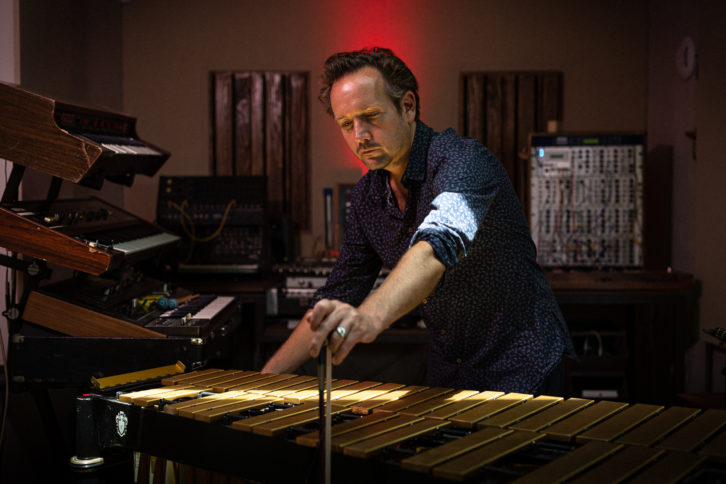
“Marie constantly having to retell the story of her assault is an example of her fragmented memory and the reason why she starts to fall apart,” he continues. “From the beginning, I would have these looping passages that would fall apart the more they repeated. That’s an example where sound gave birth to the melodies. Marie’s very simple melody that happens throughout the series was born from one of those loops. I used my upright piano, picking the strings. When there are electronics, they’re very cold and kind of clinical, but her stuff, her frailty, her melodic pieces, you can hear fingernails on the strings. I wanted that paradox of having these very specifically human sounds against this electronic, cold stuff when the police are there.”
Unbelievable has contrasting scores: frail, delicate and vulnerable for Marie, strong and confident for the detectives, who do not immediately show up in the eight-episode series. Bates’ intention was the avoid the predictable sounds for a police procedural. Instead, he came up with the idea of human-played percussion, creating simple rhythms to be used as building blocks for those moments in the series.
His friend Mathias Kunzli came to Fall On Your Sword with 50 to 60 pieces of metal objects, bells and gongs, which they laid out or hanged up around the studio’s multiple, multi-function rooms, often recording them being played at different tempos. Bates also used MIDI mallets, with which he programmed super-fast beats.
“I put the MIDI mallets around a few objects then manipulated the objects and changed the resonance while this mallet is playing an inhuman, rigid pattern,” he says. “That was a fun, weird tool to have: human versus rigid, inanimate manipulation. That’s the job, isn’t it? We’re all searching for some new sound.”
